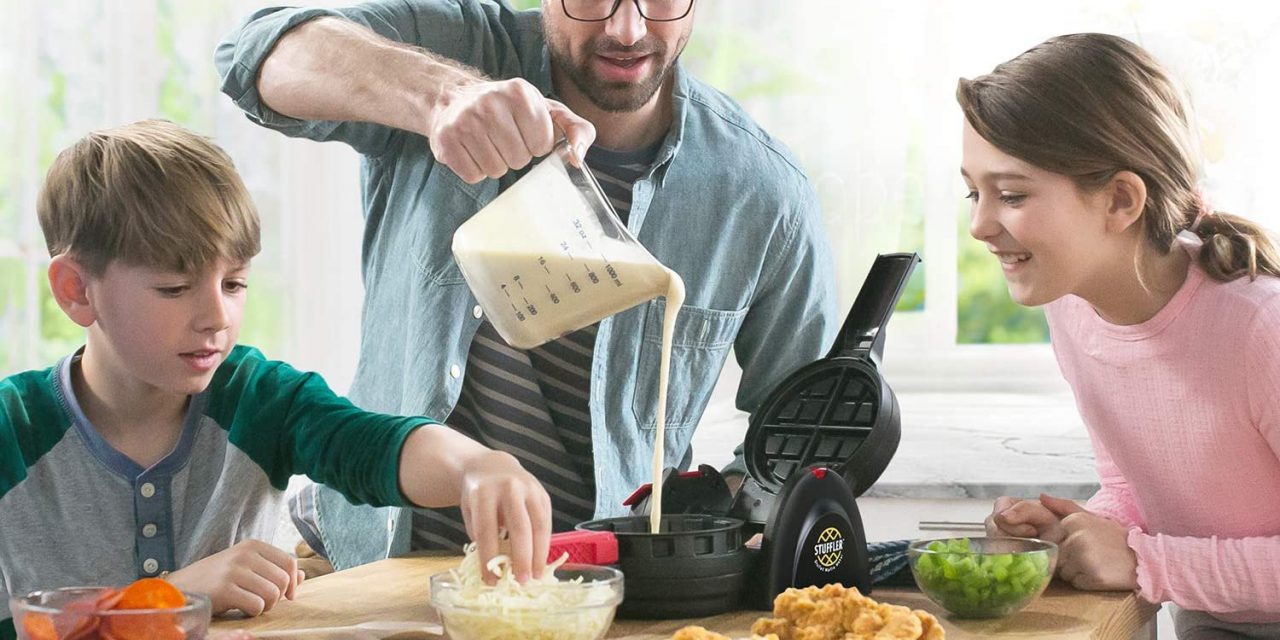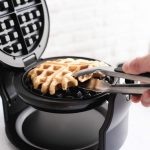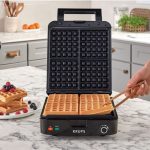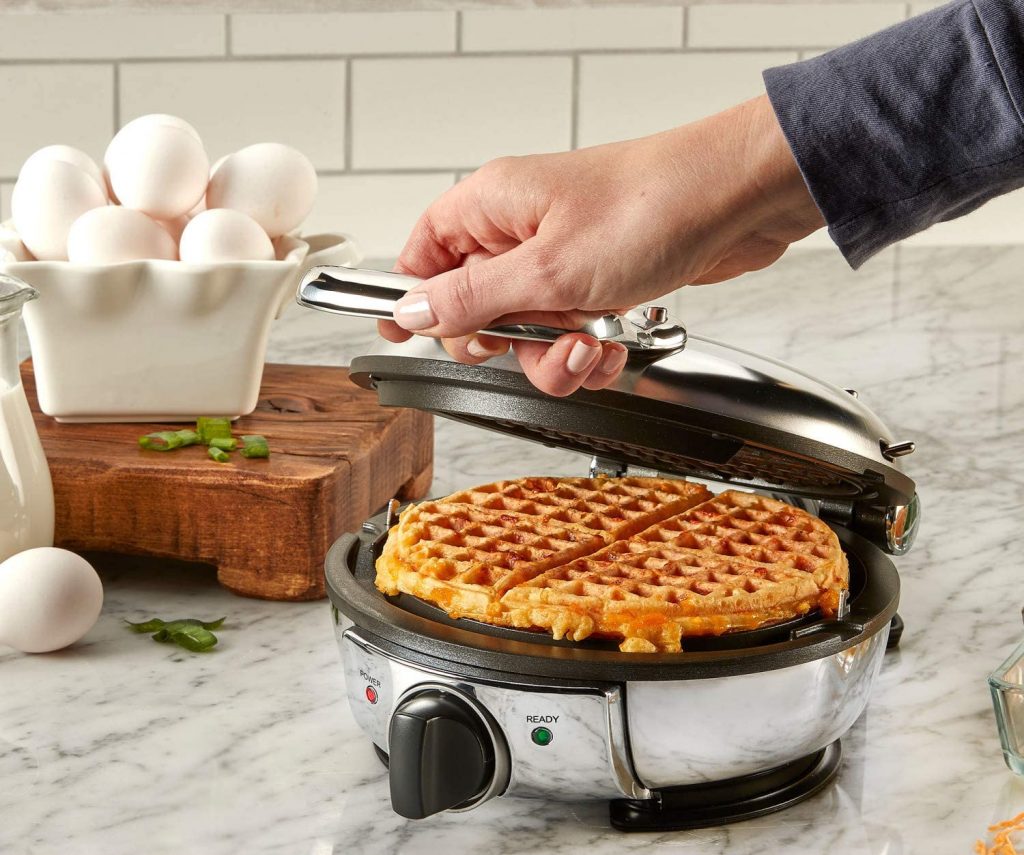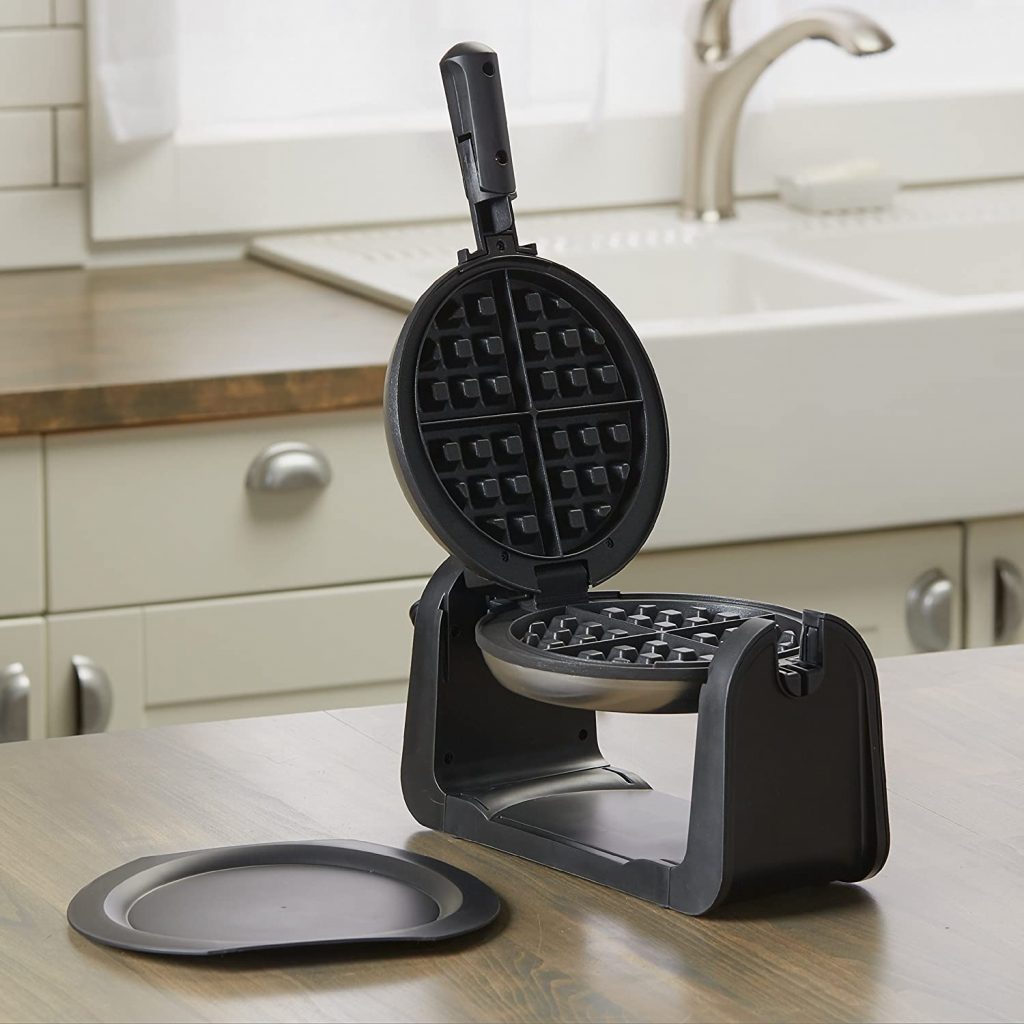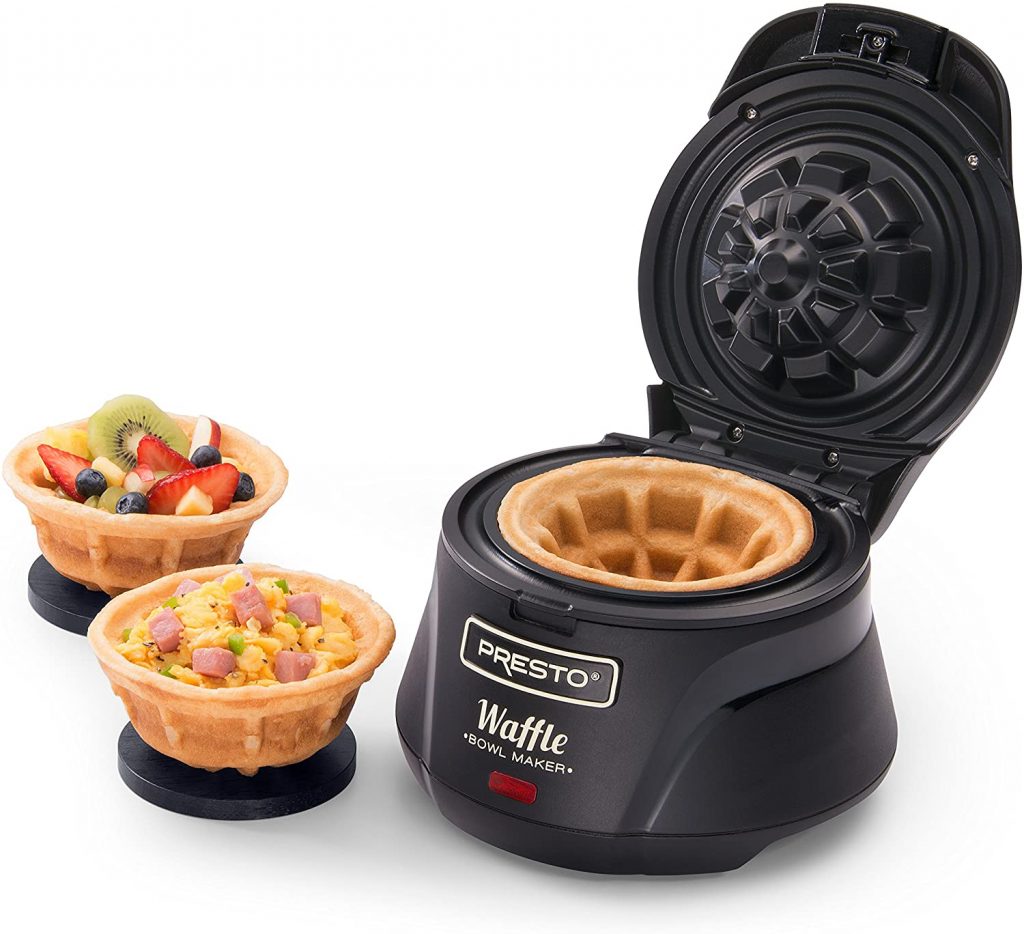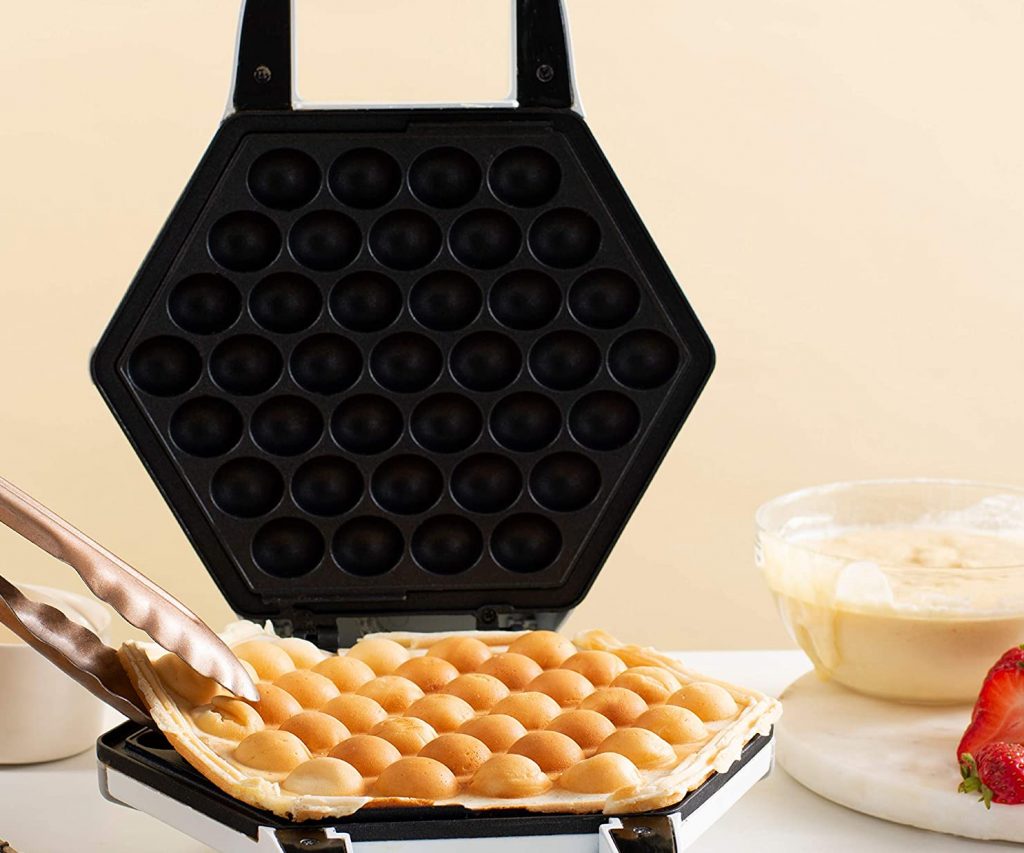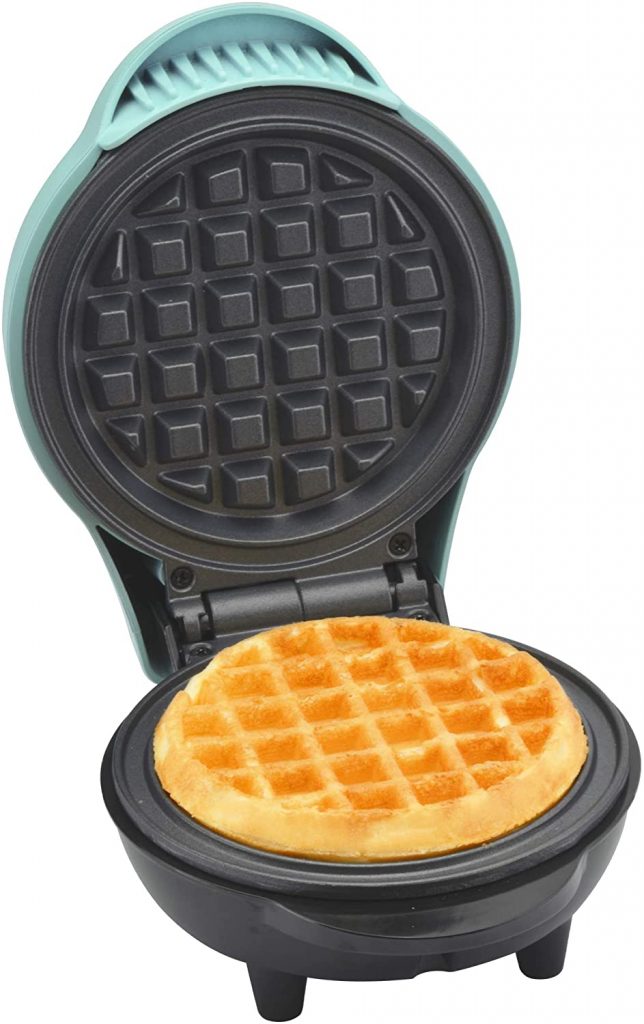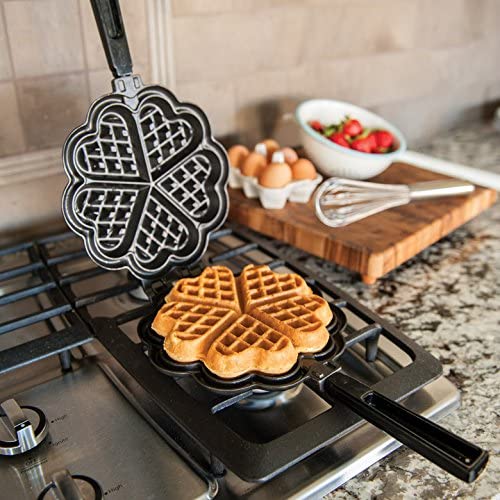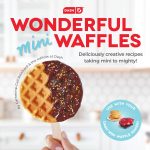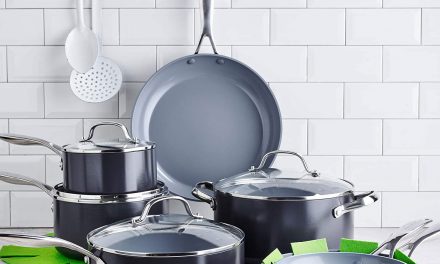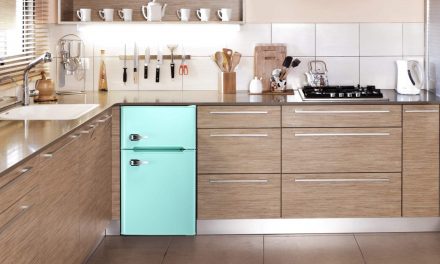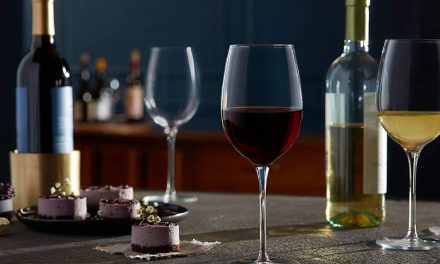Waffles are one of life’s most perfect breakfast (or brunch!) foods, but dining out for them can be expensive. A good waffle maker in the home can bring restaurant-quality breakfast to your table for a fraction of the cost. But with several types of waffle makers out there, where should you begin when it comes to buying one?
The ideal waffle iron heats up fast to produce crisp, golden-brown waffles in a matter of minutes. It also reheats quickly after each use, making it easy to cook large batches. Finding the ideal waffle maker can be tricky, though, when each has its pros and cons. Below we’ve tried to make sense of it for you by comparing the different types available on the market today and what sort of waffles they make.
Table of Contents
Types of waffle makers
The bestselling waffle irons produce one, two, or even four waffles at a time. There are several different kinds of waffle makers, from traditional style to flip waffle makers, vertical waffle makers, and even waffle bowl makers. How they function affects cooking times, waffle shape, and cleanup.
Classic waffles vs. Belgian waffles
One point of confusion you may encounter while hunting for a waffle maker is that the terms “classic” and “Belgian” technically refer to the style of waffles made, not only the style of waffle iron making them. There are slightly different ingredients between the two types of waffle historically, but most of the difference comes down to size and shape.
Manufacturers make waffle irons that produce either classic or Belgian style waffles. The waffle irons best suited to classic waffles will have shorter grid nodules and produce thinner waffles, while waffle makers for Belgian waffles will have taller nodules to make deeper pockets in the batter.
| Classic Waffle Style | Belgian Waffle Style |
 A classic waffle. Public domain photo by Bon Vivant from Unsplash. |
 A Belgian waffle. Public domain photo by Yuvraj Sachdeva from Unsplash. |
| Batter is purely flour-and-egg-based | Batter may include yeast instead of baking powder |
| Heavier, richer flavor | Lighter flavor |
| Thin | Thick (usually at least 1-inch) |
| Crispier | Fluffy |
| Shallow pockets | Deep pockets hold more toppings |
| Often, but not always, smaller | Often, but not always, bigger |
Traditional waffle makers
Often called “classic” waffle makers (just to add to the confusion!), these irons may or may not produce classic style or Belgian style waffles. What makes them classic is how they work.
Traditional electric waffle makers have a base iron plate and a second plate in the lid, attached to a hinge. You simply add the batter, close the lid, pick a setting (if the waffle maker has any), and wait a few minutes until the waffle is done.
Pros:
- Generally easy to use
- Usually doesn’t take up much space
Cons:
- Cheapest models lack good controls and indicators
- Can be hard to clean; check reviews closely
- May or may not have dishwasher safe plates
Price range: $10-$50
Flip waffle makers
Flip waffle makers have the two horizontal plates of classic waffle makers, but the similarities end there. The part that makes the waffle is actually suspended above the level of the counter. After you add the batter and close the lid, you can twist a handle to flip the waffle over as it cooks, helping it cook evenly.
A good flip waffle maker comes with a drip tray that slides underneath to catch drips during the flipping process (or if the waffle maker overflows). Some flip waffle makers actually have two cooking surfaces, one on each side. After starting one waffle, you can flip it over and start on another, making large batches much easier to juggle.
This is one of the more innovative waffle maker styles, and there are a few that standout even more from the category, like Presto’s Stuffler, which uses its shape and flipping mechanism to help you build a waffle sandwich.
Pros:
- Cooks the waffle more evenly
- Some can make multiple waffles simultaneously
- Good for large batches
Cons:
- The sides can leak
- Can be messier
- Requires more storage room
Price range: $30-$200, though commercial models can cost upwards of $1,000
Vertical waffle makers
Vertical waffle makers bring waffle-making to a new dimension. Instead of pouring batter onto a horizontal plate, and pulling the lid down on top, both plates sit vertically and you pour batter in through the top. When the waffle is done, you just pull the plate down and remove your waffle. Because of this design, these waffle makers take up very little counter space. It’s easy to fill these waffle makers completely, meaning they make for some of the best, largest waffles possible. It’s also hard to overfill, since you can see how full the waffle maker is.
If you prefer blueberry or chocolate chip waffles, though, you might run into problems. While the pour spouts on vertical waffle makers are generally plenty large for many kinds of mix-ins, you probably won’t get a very even distribution in the waffle. The batter pours down in between the plates, and there’s plenty of nooks and crannies for it to get stuck in. Make sure you look for a waffle maker that can handle thick waffles if you’re concerned.
Pros:
- Easier to fill
- Harder to overfill
- May cook waffles more evenly
- Takes up less counter space when not in use
Cons:
- Can be too narrow for chunky batters
- Because of the pour spout, it won’t make perfectly round (or square) waffles
- The bottom can leak
- Not good for waffles with fillings, like chocolate chips, fruit, or nuts
Price range: ~$50
Waffle bowl makers
Expand your waffle horizons with a waffle bowl maker. Perfect for fruity breakfasts and indulgent desserts, a waffle bowl maker can also be used to make a variety of savory waffle sandwiches and tacos.
Waffle bowl makers work a lot like classic waffle makers, but instead of two plates, there’s a bottom bowl and a rounded top, all with a waffle pattern. Just pour in the batter, close the lid, and you’re good to go. The only downside is you won’t get traditional, flat waffles out of these appliances, so if you’re hunting for versatility, look elsewhere.
Pros:
- Bring restaurant-style concoctions into your home kitchen
- Great for sandwiches and waffle tacos
Cons:
- Unitaskers; you can’t make a regular waffle in a waffle bowl maker
Price range: $25-$40
Specialty and novelty waffle makers
From hearts to Legos to popular characters, novelty waffle makers are a great option for kids and, really, anyone who wants to have a little fun with their waffles. Make a sweet Valentine’s Day treat, build a tasty waffle-stick house, or get out the toppings to cover your favorite characters with fruit, syrup, and whipped cream.
With specialty waffle makers, the sky’s the limit. One of the most popular specialty waffle makers right now is the bubble waffle maker. Popular in Hong Kong and Macau, the square indentations of a regular waffle maker are replaced by wider, half-spherical indentations that produce the characteristic bubble. Crispy on the outside, but soft on the inside, bubble waffles are commonly sold as street food.
One caveat to novelty waffle makers: many (though not all) are cheaply made, and you’ll get what you pay for. That Mickey-shaped waffle maker isn’t likely to last for years.
Pros:
- Have some fun with your waffles.
- Some waffles, like the bubble waffle, are only possible with specialty devices
Cons:
- You won’t usually be able to make a regular waffle in these makers
- Many novelty waffle makers have fewer settings, if any at all
- The cheapest will not last long
Price range: $10-$60
Mini waffle makers
Want a waffle, but don’t need to fill a plate? Love store-bought toaster waffles, like Kellogg’s Eggo Waffles, but wish you could make them for yourself? Or maybe you just don’t have the space for a full-sized waffle maker! If any of these things are true for you, mini waffle makers might be a great option for your kitchen. Most of the waffles these irons produce are only four inches wide.
Many mini waffle makers are small and compact, making them easy to store. Others are larger, but make more than one waffle at a time. Make a mini waffle for a quick treat or whip up a large batch and freeze them for later use.
Mini waffle makers are also good for chaffles and other waffle alternatives. Just make sure you get one with a good nonstick coating because cleaning the smaller corners of a mini waffle maker can be a bigger pain.
Pros:
- Single-waffle versions are compact and easy to store
- Some can make multiple waffles simultaneously
- Can make toaster waffles
- Good for chaffles
Cons:
- Can only make small waffles
- May have fewer settings
Price range: $10-$50
Stovetop waffle makers
If you want to skip the electrical cord, consider a stovetop waffle maker. These waffle makers, sometimes called waffle pans, are designed for use right on your stovetop. Preheat both sides of the iron, add batter, close the waffle maker, and cook. You’ll need to flip the iron halfway through the cooking process to ensure even cooking.
These can be a great option for camping or if you’re concerned about how well you can clean an electric waffle maker, especially if it doesn’t come with removable ironing plates. Don’t expect stovetop waffle makers to be as fast as the standard electric maker, though, especially if your stovetop takes longer to preheat.
On the upside, these makers can last a lifetime. On the downside, expect a little trial and error to learn how to use them. In particular, stovetop waffle irons that have no temperature gauge may be tricky to preheat to the right temperature.
Pros:
- Work with a variety of heat sources, including camp stoves
- Some can be used over campfires
- Won’t take up counter space
Cons:
- Harder to use
- May be messy
- Can be heavy
Price range: $20-$60
Types of waffle maker plates
The shape and mechanisms of a waffle maker are only part of the story. The materials used in the ironing plates can affect your results, as well. Overall, there are three types of waffle maker plate: nonstick, ceramic, and cast iron. Plates may or may not be removable in individual makers.
Nonstick waffle makers (Teflon, Calphalon, and other PTFEs)
Nearly all electric waffle makers have internal plates that are coated with some thermoplastic coating. This ensures waffles won’t stick as you remove them from the plate, and as a bonus, it makes clean-up a breeze.
Nonstick coatings, the most well-known being the Teflon brand, are made from a fluoropolymer called polytetrafluoroethylene, or PTFE. Perfluorooctanoic acid (PFOA), a surfactant acid that can be used in PTFE processing, has been phased out by manufacturers due to possible health concerns noted by the World Health Organization. This is why you’ll see manufacturers claim their waffle makers are nonstick, but “PFOA-free.”
Concerned about the safety of nonstick? So long as a thermoplastic coating isn’t visibly damaged with scratches or exhibiting any chipping, it should be safe to use. For the best and safest long-term results, though, wash nonstick waffle maker plates by hand only, even if a manufacturer claims their PTFE is dishwasher safe.
Pros:
- The only true nonstick solution
- Easy to clean
- Often found in inexpensive waffle makers
Cons:
- May pose some health concerns if it begins chipping
- Not recommended for dishwashers
Price range: $10-$100+, found in many kinds of waffle makers, from the cheapest to the most expensive
“Ceramic” waffle makers
As with ceramic cookware, the “ceramic” seen in waffle makers isn’t actually ceramic. It’s aluminum or another metal alloy that has a silicon finish which has a similar appearance to ceramic. Manufacturers sometimes make big claims about “ceramic” cookware and plating, particularly about it being safer, greener, and a good alternative to nonstick coatings like Teflon.
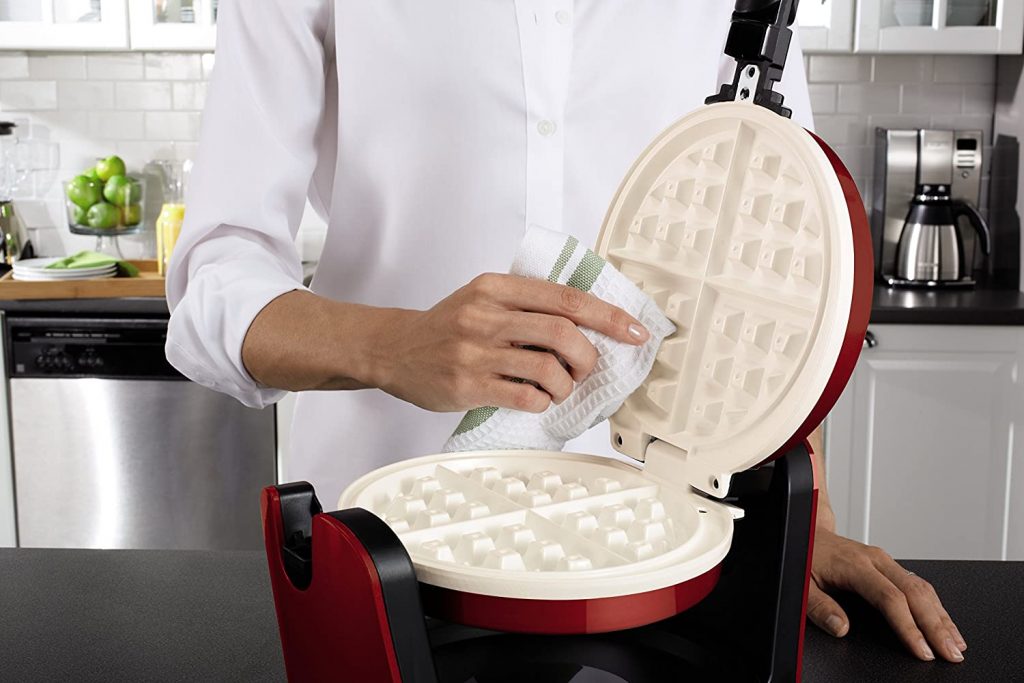
See Oster’s titanium-infused flip waffle maker, which has ceramic-coated plates.
Test kitchens haven’t always been impressed by ceramic coatings, but then testing of ceramic coatings is often done with foods in frying pans, not batter in waffle makers. If you’re only planning to use your waffle maker for waffles, there probably won’t be a lot of ingredients used that will be prone to sticking. If sticking does become an issue with these, you must season the plates with oil, not cooking spray, which breaks down the ceramic coating.
Because ceramic heats up very quickly, these waffle makers are likely to give you some of the crispiest waffles possible.
Pros:
- Makes especially crispy waffles
- Easy to clean
Cons:
- Not dishwasher safe
- May become less “nonstick” over time
Price range: $30-$50
Cast iron waffle makers
Some pros swear by good old cast iron—and with good reason. Waffles cooked in cast iron tend to have an amazing texture with just the right amount of crispiness. But don’t expect waffle-making with cast iron to be easy to start. Cast iron takes longer to preheat, and it’s heavy (making flipping difficult). Without temperature gauges or indicator lights, you’ll need to get a “feel” for making waffles with cast iron.
On the upside, a cast iron waffle maker will last a lifetime (or several lifetimes!), is nonstick when properly seasoned (without using nonstick coatings), can be used on any heat source, and is easy to clean.
An important side note if you plan to buy one of these irons: make sure it’s cast iron. Some sellers say they’re selling a cast waffle iron, but these may not be cast iron waffle makers. They may be cast aluminum, which is a hardened aluminum. Cast aluminum heats up faster, but doesn’t retain heat, making even cooking trickier.
Pros:
- Can be used on any heat source
- No PFOA/PTFE nonstick coatings
- Gets better with use and age
Cons:
- Hard to find
- Difficult to use at first
- Heavy
- Slow to heat
- Not dishwasher safe
Price range: $25-$50
What to look for in a waffle maker
Now that you know what the different types of waffle maker are and how they work, consider these few other tips as you search for the perfect waffle iron.
- Easy-to-clean: Whatever waffle maker you choose, make sure it’s easy to clean, especially if it’s an electric model. Look at plate types, drip trays, and figure out what pieces you want to be removable for easy cleanup. The easier your waffle maker is to clean, the more likely you are to use it.
- Helpful indicators: Some of the best waffle makers have indicator lights to let you know when the appliance is preheated and ready for batter. They may also have timers and audible signals for when waffles are likely finished.
- Temperature controls: America’s Test Kitchen found the best Belgian waffle makers cooked waffles between 400 and 435°F (204-224°C). You won’t find many waffle makers with exact temperature controls, but having one with a dial or level system that allows you to adjust heat will help you achieve the perfect crisping and browning you desire.
Waffle makers made in the USA
- All-Clad was founded in Canonsburg, Pennsylvania as a metallurgy company. Though they initially specialized in minting coins, they now produce a wide variety of cookware and kitchen accessories, including waffle makers. They’re still headquartered in Canonsburg and purchase some of their metals from US-based suppliers.
- C. Palmer’s story is the story of its founder, Carmen Palmieri. He was fifteen when he emigrated from Italy, and he made his first waffle plates in 1936. He continues to be the head of a company founded in 1943. Today, C. Palmer manufactures pierogi and ravioli forms as well as cooking irons, waffle cookie makers, and, of course, waffle makers.
- Carbon’s Golden Malted is better known for its pancake and waffle mixes, but it manufactures a domestic waffle maker as well. Founded by Fred Carbon in 1937 in Buchanan, Michigan. You might have had their waffles if you’ve ever used a self-service waffle maker at a hotel continental breakfast.
- Nordic Ware was founded in 1946 by Henry David Dalquist. While they’re better known for their microwaves and for introducing the Bundt pan, they also manufacture bakeware, cookware, and other kitchen appliances, including waffle makers. Nordic Ware continues to produce most of their home goods in their facilities in Minneapolis, Minnesota.
The many uses of a waffle maker
From cinnamon rolls and pizza to sandwiches and hashbrowns, the humble (and delicious) waffle is only the beginning of what you can make in your waffle maker!
The best waffle makers to buy
Don’t want to think too hard about something as simple as a waffle maker? We’ve got you covered.
- If you’re looking for the best budget waffle maker, consider Oster’s classic waffle maker. It lacks the bells and whistles seen in more expensive models, but it’s well-loved by consumers for a reason. It gets the job done.
- Make lots of waffles and willing to spend a little more on a maker? Buy Cuisinart’s double Belgian flip waffle maker. While some have reported problems, it has a long-held, five-star rating for a reason. It also happens to be America’s Test Kitchen’s favorite waffle maker for having performed well during rigorous testing.
- Get the most out of your waffle maker with the Will It Waffle? cookbook, which includes recipes not just for classic waffles, but also really creative solutions for all sorts of breakfast, brunch, and comfort food meals.

